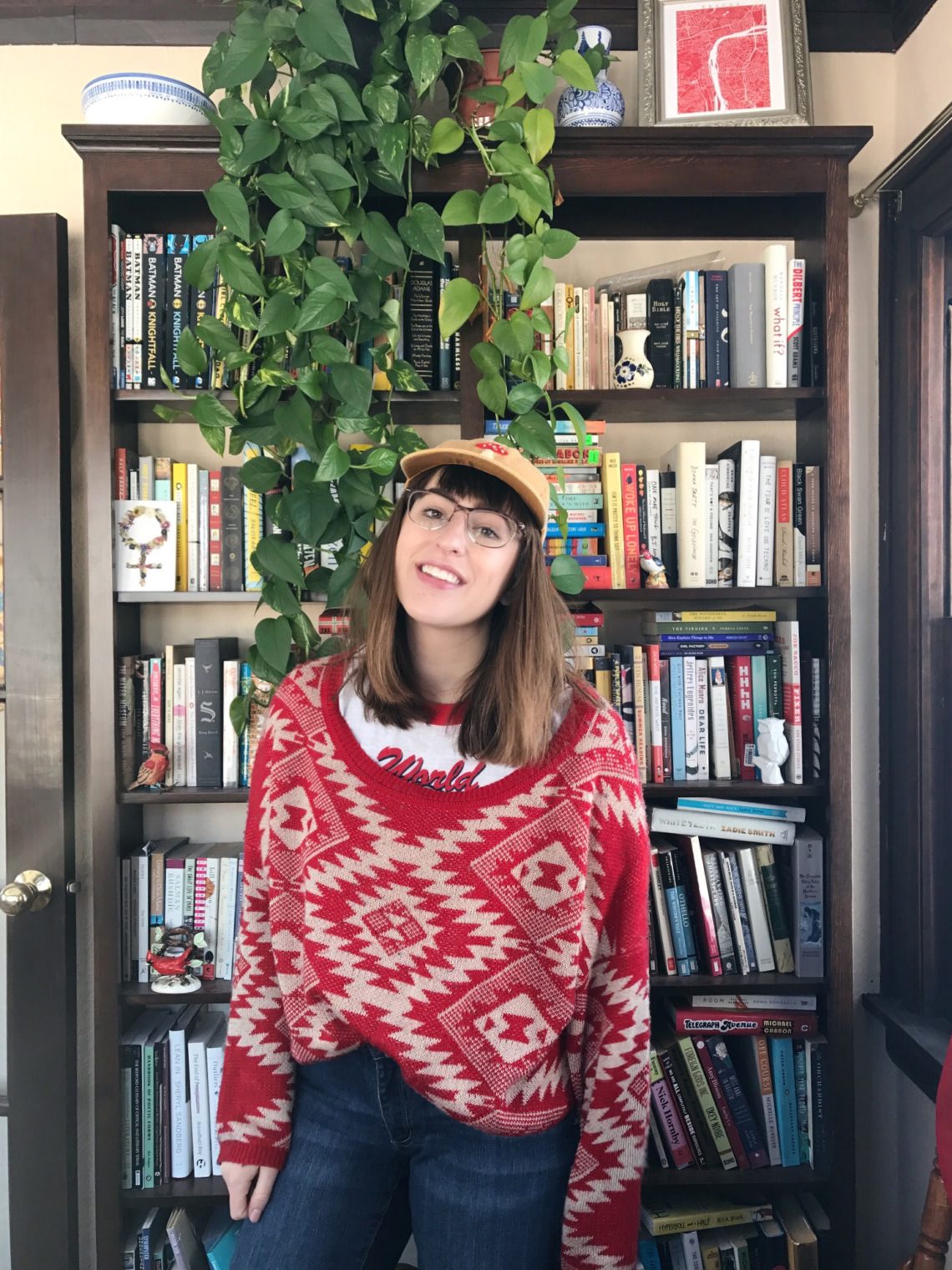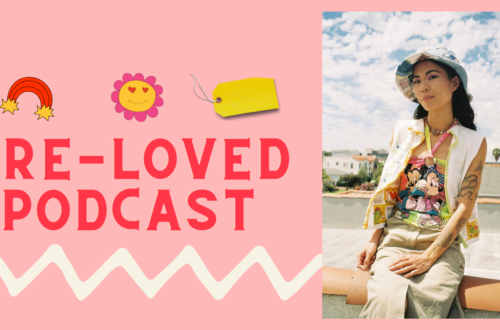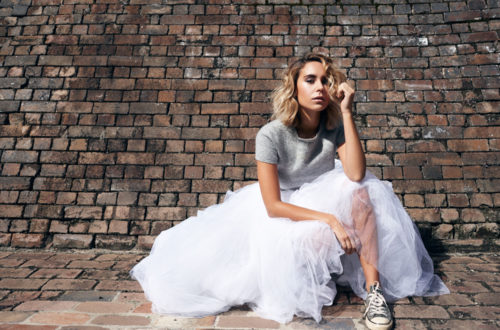
My Fashion Revolution Story
First, a little bit about Fashion Revolution.
Fashion Revolution Week is April 23-29, 2018. This public awareness campaign week occurs on the anniversary of the Rana Plaza Factory Collapse, which was five years ago in 2013. When the Rana Plaza Factory collapsed, 1,138 Bangladeshi garment factory workers were killed while at work producing garments for Western fast fashion brands.
This tragedy happened because of the horrible state of the fast fashion industry, as companies try to keep production speeds up to pace with consumers, who keep buying new clothing at faster and faster pace.
Our consumer culture is out of control. We’ve evolved into a culture where we barely wear our clothes before we throw them out. In the U.S. alone, 13 trillion tons of garment waste is sent to landfill each year. And to keep up with our rapid consumption, clothing companies have gone to drastic measures to produce clothing cheap and fast.
Despite the fact that the Rana Plaza Factory collapsed five years ago, still today 36 million people are living in modern day slavery, many of them producing garments for fast fashion brands. And we shouldn’t allow ourselves to be convinced this is the way things have always been. Since 2011, the fast fashion industry has grown a whopping 60%. And it will likely keep growing rapidly unless we change our consumer habits.
 My Fashion Revolution Story
My Fashion Revolution Story
Strangely enough, my Fashion Revolution story starts in 2011 going into 2012, when I was living in New York City. I had just watched the movie Devil Wears Prada (lol, you’re probably thinking ‘where is this going….’) and I got inspired by the scene where Miranda Priestly explains how fashion trends trickle down from designers, to department stores, to retailer fashion brands. She says:
“What you don’t know is that sweater is not just blue, it’s actually cerulean. And you’re blithely unaware of the fact that in 2002, Oscar de la Renta did a collection of cerulean gowns, and then Yves St. Laurant showed some cerulean military jackets, and then cerulean quickly showed up in the collections of eight different designers. And then it filtered down through the department stores and trickled on down into some ‘Casual Corner’ where you doubt fished that sweater out of some clearance bin.” – Devil Wears Prada
Ouch. Snark aside, this moment in the film inspired me to do a photography project. In New York City I had access to brick-and-mortar clothing stores of all the price points, just like in Devil Wears Prada. So, I walked around and took photos of the clothing displayed in shop windows, everything from designer stores to second-hand shops.
And I discovered these shops were concurrently showing the same trends and styles. It was not a gradual trickle down as Priestly described things working (ten years prior, in 2002, mind you). Instead, shops like H&M (I didn’t know the term for “fast fashion” yet, but H&M is king of the fast fashion world) were showing trends inspired by, if not even copied from, designer brands. I didn’t know it at the time, but in 2011 and 2012, fashion trends were starting to speed up, and fast. For decades, fashion collections have been produced twice a year (Spring/Summer and Fall/Winter). Today, fast fashion brands put new collections on the shelves every week.
This got me thinking about rates of production and consumption. I didn’t realize how much it effected me at the time, but it did surprise me to see how “fast” fashion was. I made a conscious effort to go thrifting more.
When I Started Thrifting
To be honest, the real reason I started thrifting was to save money. Once I discovered I could find the current trends in a thrift shop for a fraction of the price of a regular store, I hated paying full price for clothing. And I found really special things at thrift shops, which kept me coming back. 
My style started to evolve, and I wanted to dress more creatively and uniquely. Then I met Curtis a few months later, and we bonded over a love of thrift shopping, so we would go thrifting together regularly.
Thrifting really took me through the next five years. I shopped a lot of second hand, but admittedly, since my goal was to save money, I also shopped the occasional fast fashion store, too. I bought cheap clothes from major retailers. They fell apart, but they hardly cost me anything, so I just chucked them in the trash. Sound familiar?

When I Gave Up Fast Fashion
I watched the documentary True Cost on Netflix in 2017. This documentary exposed me to the harsh realities of the fashion industry, and the cost to the environment and the human workforce, which is staggering. After True Cost, I gave up fast fashion, cold turkey.
From there, I discovered Fashion Revolution and all the amazing work they’re doing to educate, and to advocate for change in the fashion industry. In addition to their public awareness campaign, Fashion Revolution produces transparency reports, white papers, and action kits for consumers and brands alike. Their educational resources help you navigate things like asking a brand about their supply chain, or writing a letter to a policymaker.
Since then, the slow fashion movement has become a major part of my life. I quit fast fashion and haven’t purchased any fast fashion clothing in over a year. I purchase the vast majority of my clothing second-hand or vintage, and what I do buy new I source from ethical brands.

The Takeaway
Fashion Revolution Week is a public awareness campaign for people who LOVE fashion, but who don’t want fast fashion to come at the expense of our planet and the people who live on it.
This initiative really matters to me, and it may or may not matter to you. And that’s okay! We can’t all care about every social movement (for example, I’m not vegan or 100% zero waste) but we should all care about something. Slow fashion is my thing, and I’ve gone all in on it.
If you’re inspired, even just a little, I’ll be thrilled. Maybe you’re more aware and want to be more conscious about how you shop. Maybe for you that means buying less stuff. Maybe it means cutting out purchases from certain brands. Maybe it means buying second-hand. I will support each and every one of you as you start your slow fashion journey — every little bit counts. After all, this didn’t happen over night for me, either.
I want to hear how your journey is going! Are you into slow fashion, or second hand shopping? Where are you struggling? I share tons of my second-hand fashion finds over on Instagram where Instagram where I’m @brumeanddaisy. I would love to chat with you there!
Peace & love, Emily





One Comment
Pingback: